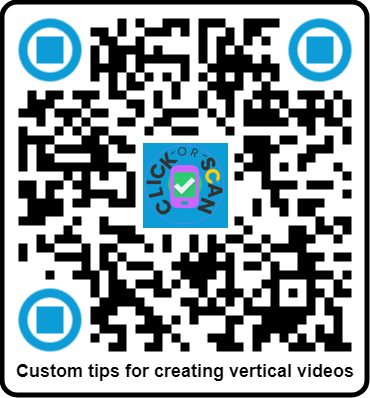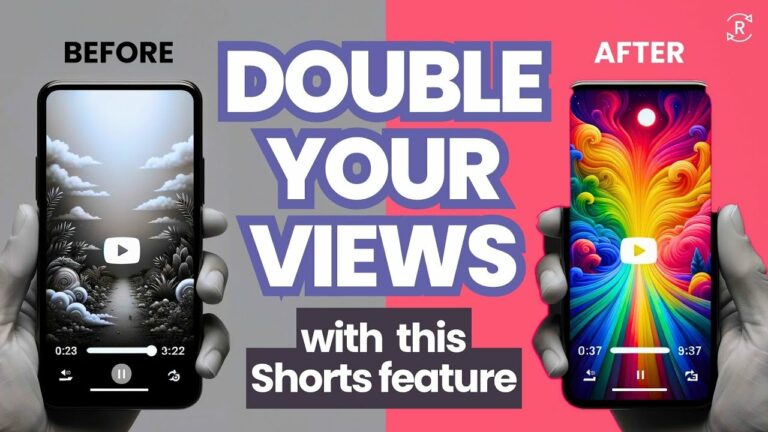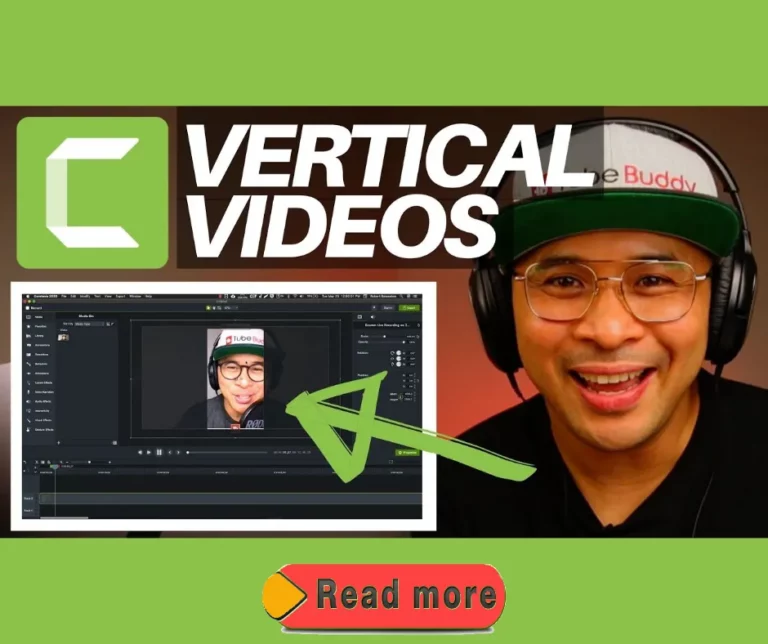Custom tips for creating vertical videos
In today’s digital landscape, vertical video has emerged as a dominant format, particularly across social media platforms and mobile devices.
As audiences increasingly engage with content on their smartphones, the ability to create visually appealing vertical videos has become essential for content creators, marketers, and educators alike.
Camtasia, a powerful screen recording and video editing software, offers a robust set of Custom tips for creating vertical videos with features that can streamline the process of producing professional-quality vertical videos.
However, maximizing the potential of this format requires a nuanced understanding of its unique characteristics and best practices.
This article presents a compilation of custom tips specifically tailored for creating vertical videos in Camtasia, guiding users through the intricacies of aspect ratios, framing techniques, and editing strategies.
Whether you are looking to enhance your social media presence, produce engaging tutorials, or craft compelling promotional content, these insights will empower you to leverage Camtasia’s capabilities effectively.
By following these tailored recommendations, you’ll not only ensure that your vertical videos capture attention but also deliver a polished and impactful viewing experience for your audience.
Join us as we explore innovative techniques to elevate your vertical video production in Camtasia.
Table of Contents Custom tips for creating vertical videos
Choose vertical resolution for better clarity
Selecting an appropriate vertical resolution is crucial for enhancing the clarity and overall quality of your videos.
Higher vertical resolutions, such as 1080×1920 for full HD, ensure that the visual elements are sharp and detailed, accommodating the viewing habits of audiences on mobile devices where vertical formats are increasingly popular.
This not only improves the viewing experience but also aligns with the preferences of platforms like Instagram Stories, TikTok, and YouTube Shorts, where vertical content thrives.
Moreover, opting for a higher vertical resolution allows for better scalability across different screen sizes, ensuring that the content remains visually appealing regardless of the device used for viewing.
By prioritizing vertical resolution, creators can effectively capture their audience’s attention, making it easier to convey messages and engage viewers effectively.
This focus on clarity ultimately enhances the perceived professionalism of the content, fostering a stronger connection with the audience.
Use the crop tool effectively
Utilizing the crop tool strategically can significantly enhance the composition and focus of your vertical videos.
By eliminating unnecessary background elements and centering key subjects, you can create a more engaging viewing experience that directs the audience’s attention precisely where it is needed.
This tool allows you to adjust the framing of your shot, ensuring that your content is visually optimized for vertical formats.
Experimenting with the crop dimensions can help establish a sense of balance, guiding the viewer’s gaze and emphasizing important details.
Additionally, the crop tool provides an opportunity to refine the narrative within your video.
By isolating specific elements or segments, you can create a more cohesive storyline that resonates with viewers.
This is particularly important in vertical videos, where screen real estate is limited and every pixel counts.
Fine-tuning your composition through cropping not only enhances visual appeal but also reinforces the message you aim to convey, resulting in a polished and professional final product.
Experiment with text alignment options
Adjusting text alignment can play a crucial role in enhancing the visual hierarchy and clarity of your vertical videos.
Depending on the content and context, aligning text to the left, right, or center can significantly affect the overall aesthetic and readability.
Center-aligned text, for instance, can create a sense of symmetry and balance, making it visually appealing for titles or key messages.
In contrast, left or right alignment may provide a more dynamic look, especially when integrating graphics or images alongside text.
Moreover, experimenting with text alignment options allows for improved audience engagement.
By strategically placing text in relation to other visual elements, you can guide the viewer’s attention and emphasize important points.
This becomes especially vital in a vertical format where space is constrained; thoughtful alignment can facilitate a seamless flow of information.
Utilizing varied alignments throughout your video can also add visual interest, keeping the audience captivated and encouraging them to absorb the presented content more effectively.
Incorporate engaging transitions between clips
Maintaining viewer interest throughout your vertical video can be significantly enhanced by the thoughtful integration of transitions between clips.
Smooth transitions not only provide visual continuity but also serve as a storytelling tool, helping to maintain the narrative flow and keep the audience engaged.
By selecting transitions that complement the content and pacing of your video, you can create a cohesive viewing experience that feels polished and professional.
Whether opting for subtle fades, dynamic wipes, or creative cuts, the key is to ensure that the transitions enhance, rather than distract from, the message being conveyed.
Additionally, using transitions strategically can effectively set the mood and tone for different segments of your video.
For instance, a quick cut may convey urgency during an action-packed sequence, while a slow dissolve might evoke a sense of reflection or calm during a more introspective moment.
It’s important to align the type of transition with the narrative arc, ensuring that each clip flows seamlessly into the next.
This thoughtful approach not only enriches the viewer’s experience but also reinforces the overall impact of your content, making it memorable and engaging.
Adjust audio levels for consistency
of transitions with the audio levels throughout your video to ensure a seamless viewing experience.
Consistent audio levels are crucial for maintaining clarity and engagement, as fluctuations in volume can distract viewers and detract from the overall message.
By carefully balancing dialogue, music, and sound effects, you create an auditory landscape that enhances the visuals and keeps the audience focused on the content.
Utilizing tools within Camtasia, such as the audio leveling feature, allows you to automatically equalize the sound levels across various clips.
This not only saves time but also minimizes the risk of sudden spikes or dips in audio that could disrupt the flow.
Additionally, consider the importance of background music in relation to spoken content; ensuring that music does not overpower the dialogue is essential for effective storytelling.
By prioritizing consistent audio levels, you contribute to a professional finish that resonates with viewers and reinforces the overall impact of your vertical video.
Utilize zoom features for emphasis
Incorporating zoom features within your video can significantly enhance storytelling by directing the viewer’s attention to key elements.
By strategically applying zoom effects, you can highlight important details or expressions, thereby creating a more engaging experience.
This technique is particularly effective for conveying emotions or illustrating complex concepts, allowing the audience to connect with the material on a deeper level.
Moreover, utilizing zoom can help maintain visual interest, particularly in vertical formats where screen space is limited.
Employing gradual zooms or subtle pans can create a dynamic flow, preventing the visuals from appearing static.
By integrating these zoom features thoughtfully, you not only emphasize critical content but also elevate the overall production quality of your video, ensuring a polished and professional result.
Add background music for enhancement
Incorporating background music into your vertical video can significantly enhance the overall viewer experience and emotional resonance.
Music serves as a powerful tool for setting the tone and mood, guiding the audience’s emotional journey throughout the narrative.
By selecting tracks that align with the theme and pacing of your content, you can create a seamless audio-visual connection that keeps viewers engaged and immersed in the story being told.
Additionally, background music can help to fill any audio gaps that may occur during the video, ensuring that the flow remains consistent and professional.
Careful consideration of the volume levels and musical style will ensure that the music complements, rather than distracts from, the primary message.
By thoughtfully integrating background music, you not only enhance the aesthetic quality of your video but also contribute to a more memorable and impactful viewing experience.
Preview your video before exporting
Before finalizing your video project, it is essential to conduct a thorough preview to ensure that all elements are cohesively blended and functioning as intended.
This step allows you to identify any discrepancies in audio levels, timing, or visual transitions that may not have been evident during the editing process.
By watching the video from start to finish, you can assess the overall flow and make adjustments to enhance clarity and engagement.
Pay close attention to how each segment transitions, ensuring that the pacing aligns with your narrative objectives.
This careful review process not only helps in catching potential errors but also provides an opportunity to evaluate the effectiveness of your music selections and how they complement the visuals.
Ultimately, dedicating time to preview your video can significantly improve the quality of the final product, ensuring that it resonates with your intended audience.
Optimize file size for sharing
Reducing the file size of your video is crucial for seamless sharing, especially when distributing content via email or social media platforms, which often impose strict limits on file sizes.
To achieve this, consider employing efficient encoding settings and selecting appropriate bitrates that maintain acceptable quality while minimizing the overall size.
Utilizing formats that are widely supported, such as MP4, can further enhance compatibility across various devices and platforms, making it easier for viewers to access your content without encountering playback issues.
Additionally, it may be beneficial to strategically trim unnecessary segments or use compression tools designed to optimize the video without compromising its integrity.
This approach not only facilitates easier sharing but also ensures quicker upload and download times, enhancing the user experience.
By balancing quality and size, you can effectively distribute your vertical videos while retaining the attention of your audience.
Follow social media platform guidelines
Adhering to the specific guidelines established by social media platforms is essential for maximizing the visibility and engagement of your vertical videos.
Each platform has its own set of requirements regarding video dimensions, duration, and file formats, which can influence how your content is displayed and how well it performs.
For instance, understanding the optimal aspect ratios and resolution settings can help ensure that your videos are visually appealing and effectively reach your target audience.
Moreover, platforms often prioritize content that aligns with their guidelines, meaning that following these recommendations not only enhances presentation but may also improve the chances of your videos being featured or promoted within the platform.
Familiarizing yourself with these standards and adjusting your video production accordingly can lead to a more professional output and better engagement metrics, ultimately supporting your broader content strategy.
In conclusion, creating vertical videos in Camtasia can be a seamless and rewarding experience when leveraging the right techniques and tools.
By following the custom tips outlined in this post—such as adjusting project settings, utilizing the crop and zoom features, and optimizing audio and visual elements—you can enhance the viewer’s engagement and ensure your content stands out in a mobile-centric world.
As video consumption continues to shift towards vertical formats, mastering these skills in Camtasia will not only elevate your production quality but also position your content for maximum impact across various platforms.
Embrace these strategies, and watch your videos resonate with your audience like never before.








